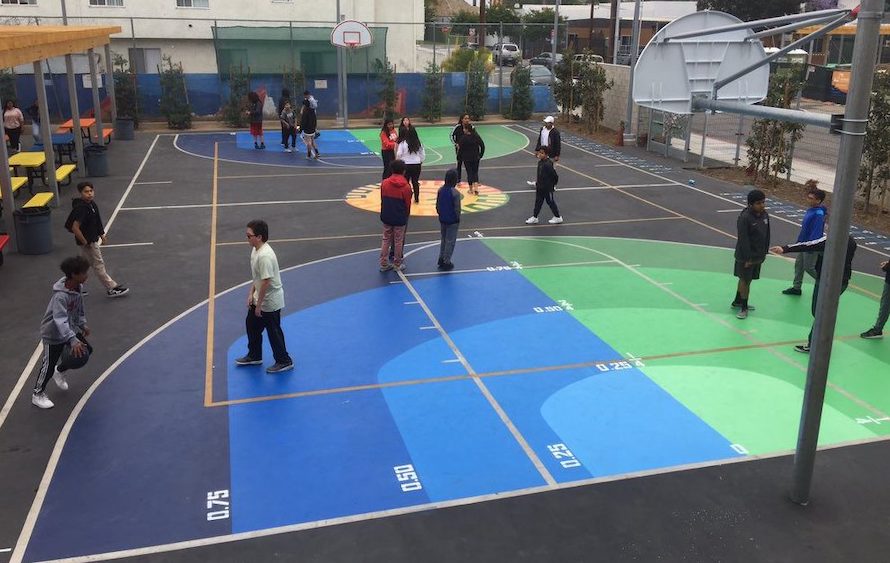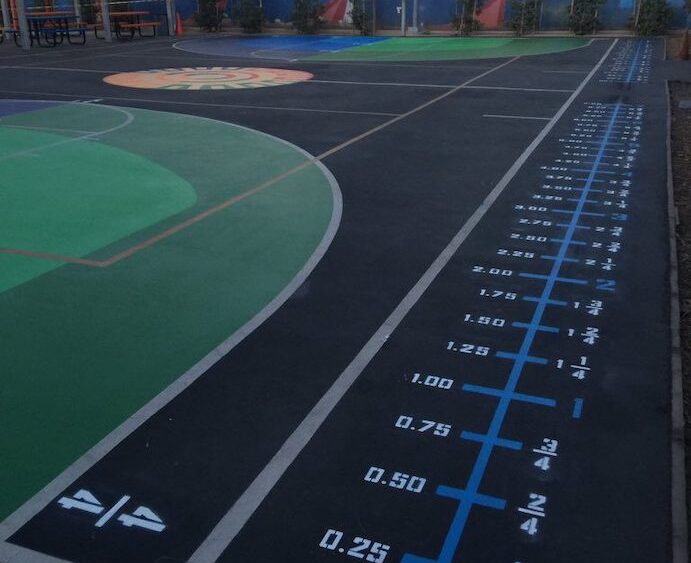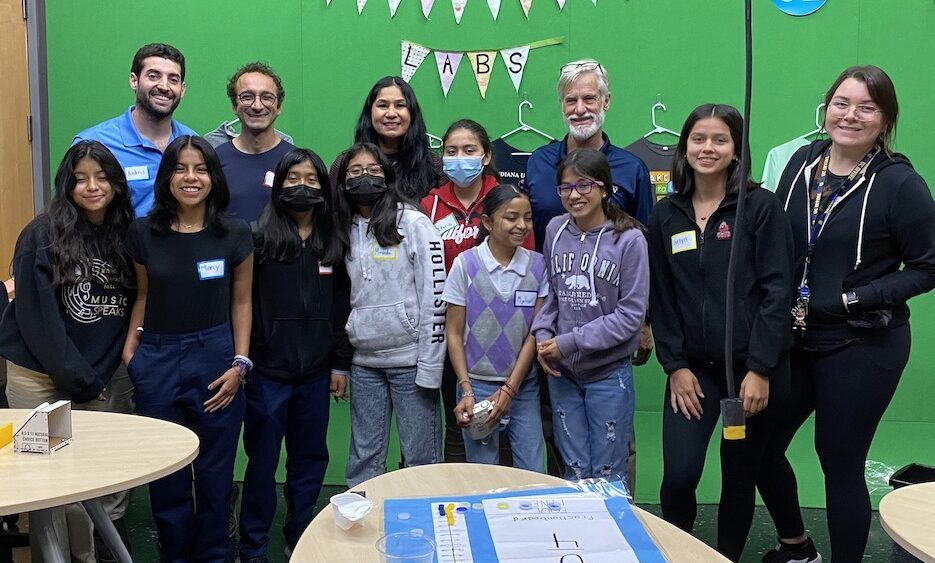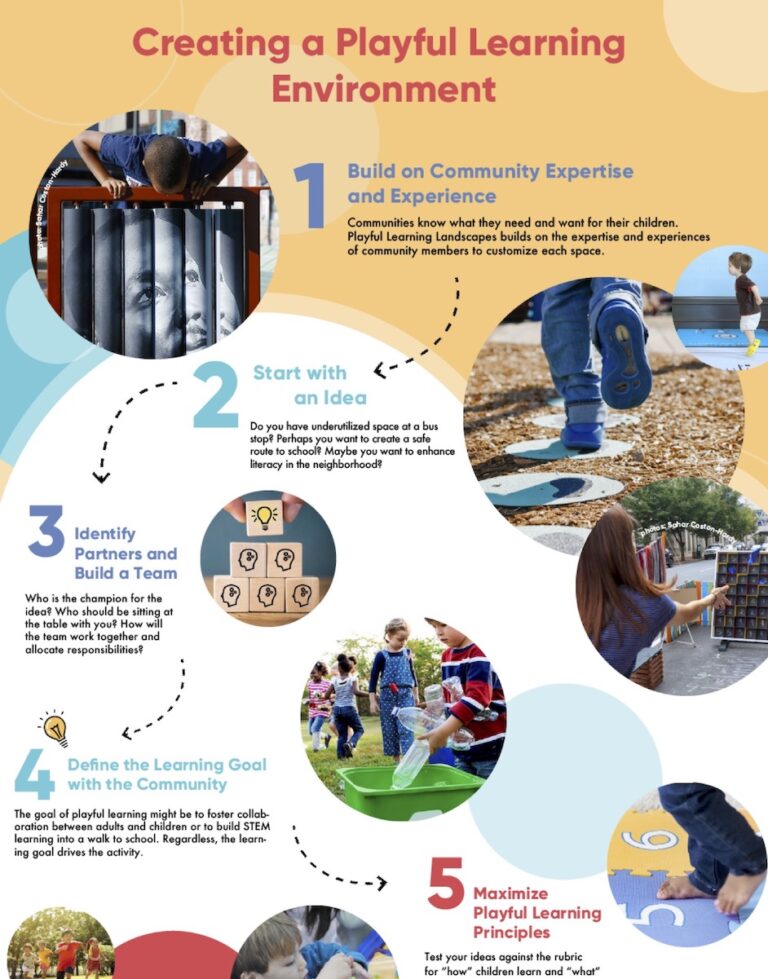
Dr. Andres Bustamante is on a mission to design and implement playful STEM learning activities in the places that children and families spend large amounts of time. The University of California-Irvine Assistant Professor focuses his research on early childhood education and community-based intervention. As the director of the university’s STEM Learning Lab, he works with communities to design STEM-inspired activities and experiences that reflect the culture, history and experiences of the teachers, parents and children who will be using them.
“We hope that by infusing the everyday spaces with learning opportunities like number lines and interactive murals, it will spark playful STEM learning and interactions,” Bustamante says.
Recently, his work led to an investigation into getting students to think about rational numbers on their own school playground. Partnering with educators at El Sol Science & Arts Academy in California, the group set out to create an engaging math learning experience students would be excited to be a part of. Together, they designed and piloted a game that uses the area of a basketball court to explore fractions and decimals.
Fraction Ball
Fraction Ball converts a basketball court’s traditional three-point arc so that it is worth one point. At one end of the court, the smaller arcs represent shots worth 1/4, 2/4, and 3/4 points. At the other end, the smaller arcs represent 1/3 and 2/3 points. Fractions are represented on the right side of the court, while decimals are represented on the left. The game makes visible the relationship between fractions and their equivalent decimals.
Fraction Ball also includes a number line at the side of the court and children stand on it to keep track of points. This is an element the team was intent on including because of strong research evidence indicating that number lines are an effective way to help students develop mathematical thinking.
Bustamante says focusing on fraction and decimal learning is important because they are notoriously difficult for young math learners. He believes the implications of Fraction Ball are substantial because it authentically engages students in fractions and decimals and implementation is short and low-cost.
Transform your own basketball court
“Fraction Ball can be painted pretty much anywhere or even drawn with chalk, so teachers can absolutely take initiative and make it happen,” Bustamante says. He encourages teachers and students to get creative and make up their own ideas for using fractions and decimals on the court.
In a recent talk at the Ontario Institute for Studies in Education, Bustamante shared a variation of Fraction Ball for younger learners that is focused on whole number comprehension: Number Ball.
“It’s the same game, but with 1, 2, 3, 4, 5 on the court and a whole number line to keep score,” he says. An informal study with a small group of kindergarten and Grade 1 students demonstrated the game may have potential to positively influence whole number comprehension.
Fractions & decimals in focus
The Fraction Ball court at El Sol Science & Arts Academy has painted arcs that divide the court into fractional units. Students can take ¼ or 0.25-point shots at one end and ⅓ or 0.33-point shots at the other.
Keeping score on a number line
Students use a court-side number line during the game to keep track of their team’s score.
More information
For additional information on the Fraction Ball project, please visit the Playing Learning Landscapes website.
Promising research results
In an initial study, Bustamante and his partners determined that Fraction Ball improved students’ fraction and decimal number learning with only six 50-minute sessions over three weeks. After this, they adapted the rules so children were required to say their mathematical thinking out loud while keeping score on the number line.
“For example, one whole plus one half equals one and one half and then they move down the number line,” he says, noting students’ fraction and decimal learning continued to improve. “We then spent two years designing with teachers to design connections between the Fraction Ball court and the classroom. We created a series of lessons in the classroom and did a third study where we found impacts almost across the board.” (Bustamante, 2022).
Bustamante’s team has a formal dissemination plan underway, working with Santa Ana Unified School District teachers to connect Fraction Ball to their classroom instruction and adapt the games to target learning goals. Over five years, they plan to scale Fraction Ball across all of the district’s 36 elementary schools.
Creating STEM-inspired playful landscapes
Dr. Bustamante’s work also includes community-based projects that encourage youth and adults to engage in playful educational activities in public spaces, such as parks, libraries, bus-stops, and grocery stores.
“Generally, learning experiences are great when they are social, iterative, engaged, meaningful, and joyful!” Bustamante says. “And for a STEM focus, especially for young children, learning the process to ‘do’ science – observing, predicting, asking questions, collecting and analyzing data – is a great place to start.”
Bustamante recommends teachers look at the Playful Learning Landscape Action Network’s Playful Learning Playbook, which has a set of guiding principles to create high-quality playful learning experiences for kids. It also offers a range of playful learning activities from Do-It-Yourself projects to more complicated installations.
Video: Bustamante talks creating playful STEM learning in the schoolyard and community spaces
Bustamante visited the Ontario Institute of Studies in Education in Toronto to share insight on his efforts to engage community, businesses, families, educators and children to create playful STEM learning opportunities at school and in community spaces.
Thank you to Dr. Andres Bustamante and Kenneth Lewis for sharing the images used in this article.
References
Bustamante, A. S., Begolli, K. N., Alvarez-Vargas, D., Bailey, D. H., & Richland, L. E. (2022). Fraction ball: Playful and physically active fraction and decimal learning. Journal of Educational Psychology, 114(6), 1307–1320.




